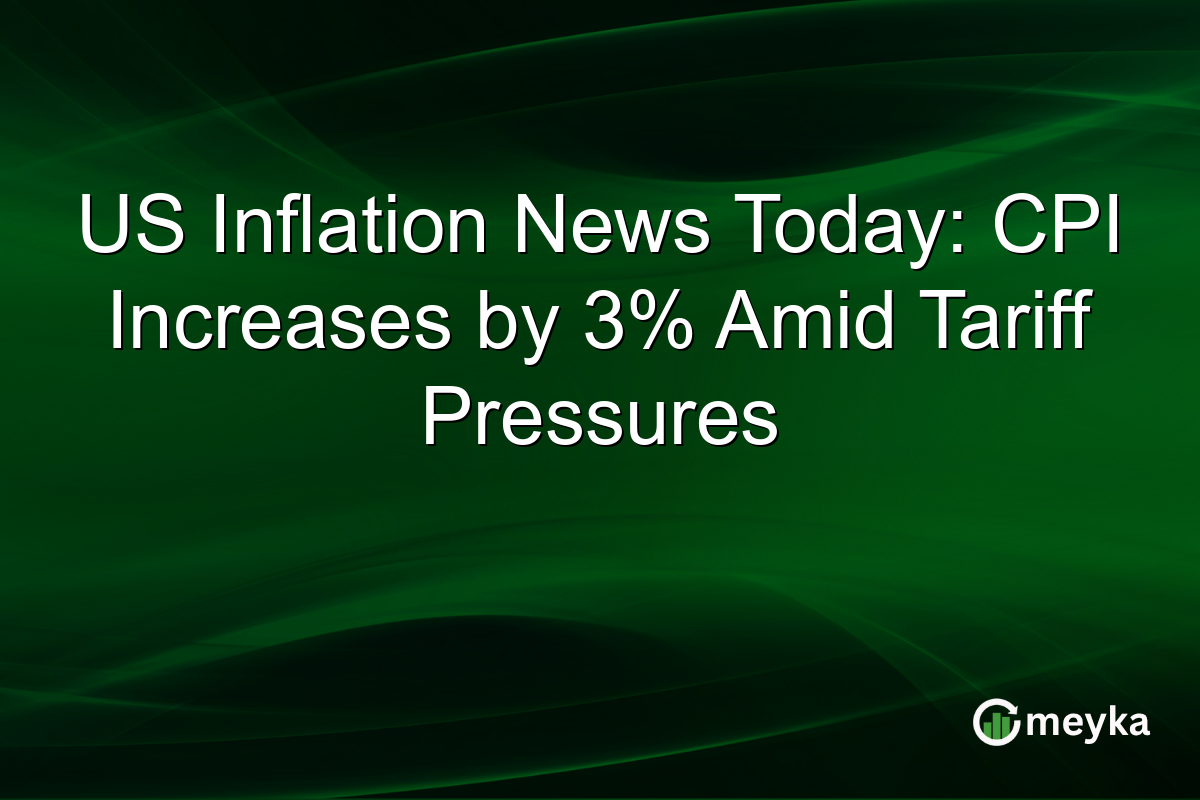US Inflation News Today: CPI Increases by 3% Amid Tariff Pressures
US inflation is capturing attention as the Consumer Price Index (CPI) increased by 3% in September 2025. This rise is primarily driven by higher energy prices and ongoing effects of tariffs from the previous administration. These factors provide essential insights, especially during the economic uncertainty brought about by the recent government shutdown. Understanding these dynamics is crucial for predicting future economic conditions and financial planning, particularly concerning Social Security adjustments.
CPI Report October 2025: Key Drivers
The latest CPI report for October 2025 shows a 3% rise compared to the same time last year. Energy costs surged, contributing significantly to this increase. With gasoline and natural gas prices climbing, many consumers are feeling the effects more intensely in their monthly budgets. For people tracking their expenses, these numbers highlight the ongoing pressure on household finances.
Tariffs still play a notable role. Originally imposed during the Trump administration, these tariffs have not only persisted but also influenced production costs, leading to higher consumer prices. Understanding this helps us anticipate how long these price pressures will persist. Many are watching closely to see if changes in policy might alleviate some of the ongoing burdens.
Tariff Impact on Prices
Tariffs have been a controversial topic, with businesses facing higher costs for imported goods, often leading to increased prices for consumers. The ongoing effects of these policies continue to be felt, even years after implementation.
This pricing pressure is not just limited to imported goods but also extends to domestic products relying on imported components. While some businesses manage to absorb additional costs, others pass them onto the consumer, impacting overall consumer confidence and spending patterns.
These dynamics are crucial for economists and policymakers who aim to balance trade policies with economic growth and consumer welfare.
Energy and Food Prices: A Closer Look
Energy and food prices have been volatile, impacting the overall inflation picture. In September 2025, energy costs rose by a notable margin, affecting transportation and household utilities. This trend affects those who may rely heavily on commuting or heating costs.
Food prices also remain unstable, albeit to a lesser extent. Factors such as supply chain disruptions and climate effects are constant variables keeping these prices in flux. Observers are concerned about how these changes might influence consumer spending, reflecting a potentially slowed economic recovery.
Given these uncertainties, it becomes crucial for individuals to monitor these categories when planning their finances.
Market Sentiment and Investor Reaction
With the CPI report indicating a 3% rise, investor focus has shifted toward sectors heavily impacted by energy prices and tariffs. Investors are keenly analyzing how these inflation figures might affect future interest rate decisions by the Federal Reserve.
While some sectors may benefit from rising prices, others face squeezes on profit margins, particularly those reliant on imported goods. On platforms like CBS News, experts discuss potential rate hikes, which could further tighten economic conditions.
The stock market reaction underscores the importance of these developments, making it vital for investors to stay informed and consider adjusting portfolios accordingly.
Final Thoughts
As the CPI rises by 3%, the impact of tariffs and energy prices highlights key inflationary pressures facing the US economy. These trends not only influence economic forecasting but also direct policy considerations regarding interest rates and fiscal measures. For individuals, understanding these elements becomes critical in financial planning, particularly with adjustments anticipated in Social Security and other economic safety nets. As we continue to monitor these changes, keeping abreast of real-time updates through platforms like Meyka can provide crucial insights for navigating these economic challenges efficiently. Staying informed empowers us to make better decisions in an evolving landscape.
FAQs
The rise in the US CPI by 3% is attributed to higher energy prices and lingering effects from tariffs. Energy costs, including gasoline, have increased significantly, while tariffs continue to drive up production costs. These factors combined lead to increased consumer prices.
Tariffs boost the cost of imported goods and components, compelling businesses to raise prices for consumers. This ripple effect impacts consumer spending and can contribute to inflation. Over time, these increased costs are embedded into goods, affecting overall market behavior.
Energy prices directly affect transportation and heating costs, which are major components of the CPI. When prices rise, overall consumer expenses also increase, influencing inflation rates. Elevated energy prices can also impact goods and services reliant on transportation.
Inflation adjustments directly influence Social Security benefits, which are indexed to changes in the CPI. A rise in CPI typically triggers cost-of-living adjustments (COLAs) for beneficiaries, helping to maintain purchasing power despite increased prices.
Investors should watch sectors influenced by tariffs and energy prices, as these can affect profit margins. Monitoring Federal Reserve interest rate decisions is crucial, as they could signal market shifts. Diversification and staying informed are key strategies.
Disclaimer:
This is for information only, not financial advice. Always do your research.






